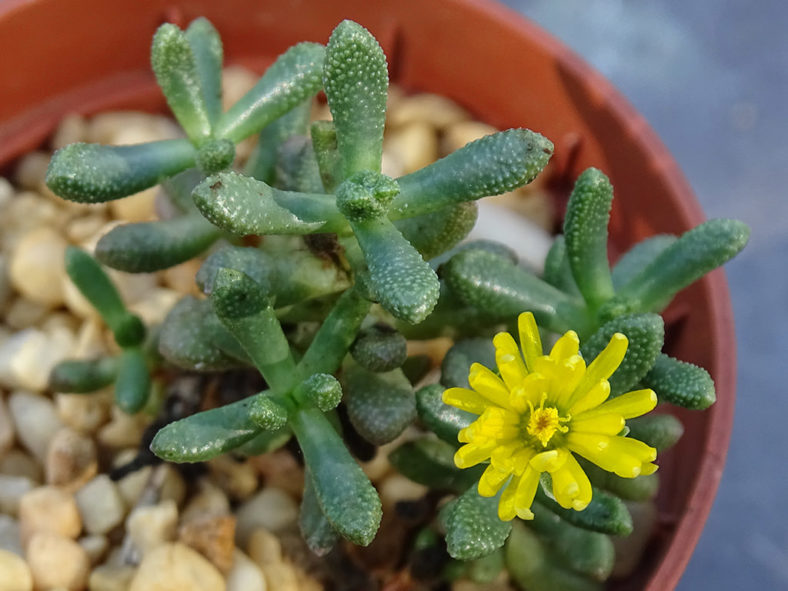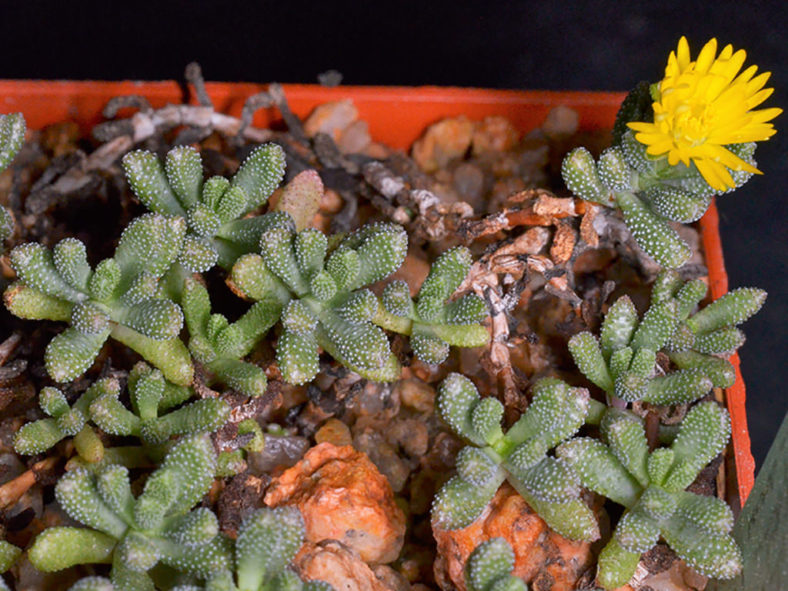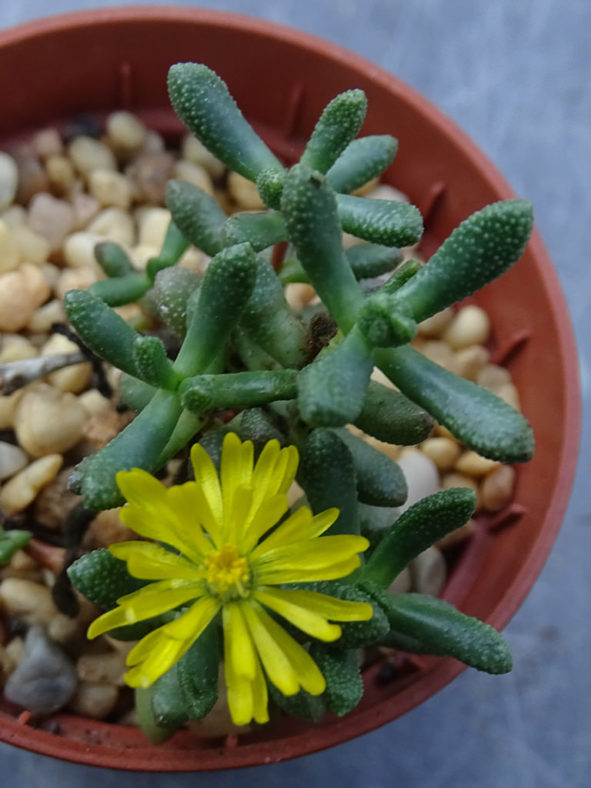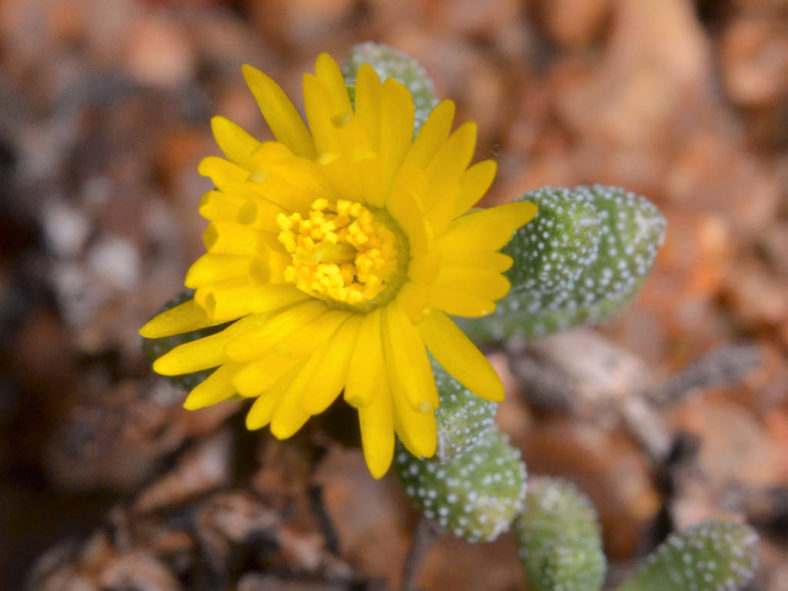Scientific Name
Rhinephyllum parvifolium L.Bolus
Scientific Classification
Family: Aizoaceae
Subfamily: Ruschioideae
Tribe: Ruschieae
Genus: Rhinephyllum
Etymology
The specific epithet "parvifolium (pronounced par-vee-FOH-lee-um)" means "small-leaved" and refers to the size of the leaves.
Origin
Rhinephyllum parvifolium is native to South Africa (Eastern Cape).
Description
Rhinephyllum parvifolium is a succulent subshrub with short, woody branches and small, fleshy leaves with tiny, whitish tubercles. The older lower leaves wither and die, persisting on branches.
The solitary flowers are yellow and appear on a short stalk in summer, opening in the late afternoon. The fruits are 5-locular capsules with brownish seeds.

How to Grow and Care for Rhinephyllum parvifolium
Light: This succulent needs bright light but does not like too much direct sun. The perfect spot to grow your R. parvifolium indoors is a sunny windowsill with 4 to 5 hours of direct sunlight during the early part of the day and partial shade during the afternoon.
Soil: R. parvifolium thrives best in porous soil mixes that allow water to drain away quickly. You can use a commercial potting mix specially designed for succulents or make your own.
Temperature: High temperatures are not a problem for this plant as long as there is plenty of fresh air, but it does not have good resistance to extreme cold weather. R. parvifolium can withstand temperatures as low as 30 °F (-1.1 °C). USDA Plant Hardiness Zones 10a to 11b, 30 to 50 °F (-1.1 to 10 °C).
Watering: R. parvifolium requires little or no water when it goes dormant, usually in winter. When it begins to grow again in spring, it is safe to water deeply, allowing the soil to dry before between waterings. If leaves start to wrinkle during active growth, your plant needs water.
Fertilizing: This small succulent is a light feeder and does not need fertilizer if repotted every two years.
Repotting: R. parvifolium will happily stay in the same pot for several decades. Repotting is commonly done to give the plant a larger growing space. The best time to repot this plant is at the beginning of its active growth period, but it can be done at almost any time while actively growing.
Propagation: This species is easily propagated by stem cuttings and seeds. The best time to take cuttings is summer. Sow the seeds in spring or early summer in a pot with a well-drained soil mix.
Learn more at How to Grow and Care for Mesembs.
Toxicity of Rhinephyllum parvifolium
R. parvifolium is considered non-toxic to humans and pets.
Links
- Back to genus Rhinephyllum
- Succupedia: Browse succulents by Scientific Name, Common Name, Genus, Family, USDA Hardiness Zone, Origin, or cacti by Genus
Photo Gallery


